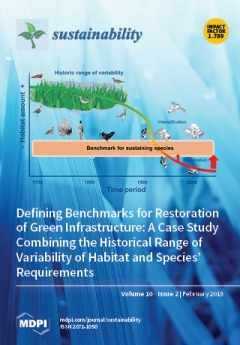1
Dipartimento di Biologia, University of Padova, Via U. Bassi 58/B 35100 Padova, Italy
2
Israel Oceanography and Limnological Research, National Institute of Oceanography, Tel Shikmona, PO Box 8030, Haifa 31080, Israel
3
Max Planck Institute for Molecular Biomedicine, Röntgenstraße 20, and Medical Faculty, University of Münster, Albert-Schweitzer-Campus 1, 48149 Münster, Germany
4
Institute of Oceanology, Polish Academy of Sciences, Powstańców Warszawy 55, 81-712 Sopot, Poland
5
Luxembourg Institute of Science and Technology, 5, avenue des Hauts-Fourneaux, L-4362 Esch-sur-Alzette, Luxembourg
6
Department of Earth and Marine Sciences, University of Palermo, Via Archirafi 22, 90123 Palermo, Italy
7
Muséum National d’Histoire Naturelle, MCAM Laboratory (UMR 7245CNRS-MNHN) 75005 Paris, France
8
Biotechnical Faculty, University of Ljubljana, Večna pot 111, 1000 Ljubljana, Slovenia
9
Achucarro Basque Center for Neuroscience, Science Park of the UPV/EHU, Sede Building, Barrio Sarriena, E-48940 Leioa, and Ikerbasque, The Basque Foundation for Science. María Díaz Haroko Kalea, 3, 48013 Bilbo, Spain
10
Centre for Chromosome Biology, School of Natural Sciences, National University of Ireland Galway, Galway, Ireland
11
Sorbonne Université, UPMC, Univ Paris 06, CNRS, Biologie Intégrative des Organismes Marins (BIOM), Observatoire Océanologique, F-66650 Banyuls/Mer, France
12
Institut für Zoologie, Universität Innsbruck, Technikerstraβe 50, A-6020 Innsbruck, Austria
13
Tallinn University of Technology, Ehitajate tee 5, 19086 Tallinn, Estonia
14
Center for Marine Research, Ruđer Bošković Institute, G. Paliaga 5, HR-52210 Rovinj, Croatia
15
Departament de Genetica, Universitat de Barcelona, Av. Diagonal 643, 08028-Barcelona, Spain and Institut Català de Recerca i Estudis Avancats (ICREA), 08010-Barcelona, Spain
16
GEE & CDB Departments, University College London, Darwin Building, Gower Street, London WC1E 6BT, UK
17
Rudjer Boskovic Institute, Laboratory for Aquaculture and Pathology of Aquaculture Organisms, Bijenicka cesta 54, HR-10000 Zagreb, Croatia
18
Dipartimento di Scienze e Tecnologie Biologiche ed Ambientali, Università del Salento, Strada Provinciale Lecce-Monteroni, 73100 Lecce, Italy
19
National Institute of Biology, Marine Biology Station, Fornače 41, SI-6330 Piran, Slovenia
20
Fraunhofer Research Institution for Marine Biotechnology and Cell Technology, Mönkhofer Weg 239a, 23562 Lübeck, Germany
21
Sars International Centre for Marine Molecular Biology, University of Bergen, Thormøhlensgt. 55, N-5006 Bergen, Norway
22
Israel Oceanography and Limnological Research, National Institute of Oceanography, Tel Shikmona, PO Box 8030, Haifa 31080, Israel
23
Biomaterials, Biodegradables and Biomimetics, University of Minho, AvePark—Parque de Ciência e Tecnologia, 4805-017 Barco, Guimarães, Portugal
24
Scottish Oceans Insitute, East Sands, University of St Andrews, KY16 8LB and School of Biology, Biomedical Sciences Research Complex, North Haugh, University of St Andrews, St Andrews KY16 9ST, UK
25
Anatomy Department, Faculty of Medicine & Surgery, University of Malta, Msida MSD2080, Malta
26
Universitade Nova de Lisboa, ITQB NOVA, Instituto de Tecnologia Química e Biológica António Xavier, Av. da República, 2780-157 Oeiras, Portugal
add
Show full affiliation list
remove
Hide full affiliation list





